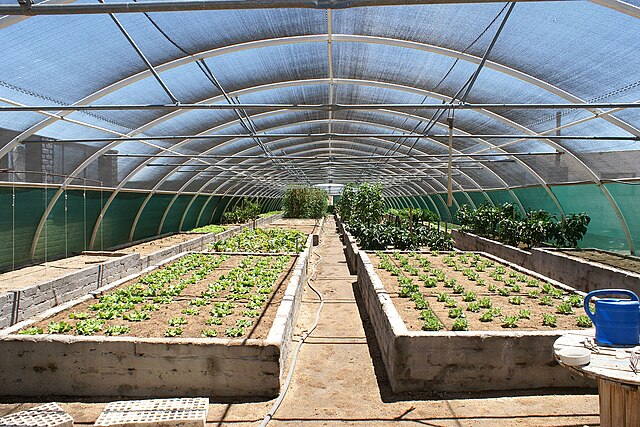State-run farms under the Green Schemes program in Namibia are elevating food self-sufficiency following strong presidential commitment.
President Netumbo Nandi-Ndaitwah on September 1, 2025 finished her Green Schemes’ tour at Unam Ogongo Campus in the country’s north.
She said that a nation that can’t feed itself is bereft of respect, and thus the impetus to modernize local agriculture.
One such modern project is the rice initiative at Ogongo whose many gains include sustainable production with minimal waste.
Here, solar irrigation takes the center stage hand-in-hand with soil monitoring technology that keeps water supply optimal.
Another similar project that Nandi-Ndaitwah toured is the University of Namibia’s Kalimbeza Rice Project on the banks of the Zambezi.
A collaboration with a higher education institution from Indonesia, Kalimbeza hosts 229 hectares (ha),150 ha of which under paddy. The 2024-25 season yielded 108 tonnes of the grain from 38 ha.
The president vowed to prioritize the Zambezi basin and maize-rich Kavango West and East as continental-level food hubs.
Kavango East hosts the Shadikongoro Irrigation Green Scheme, which the president recently found better than in her March 2024 inspection.
She however delineated high electric costs and lack of in-house harvesters at Shadikongoro as challenges that impact harvest timings.
Still in Kavango East is the Ndonga Linena project, whose 1,000 hectares presidential assessment found utilizable by 2026. The mega zone will also allocate orchards and groves for fruits in places where crops perform poorly.
The concerted campaign towards food security is bearing fruit for in 2024, Namibia attained a food sufficiency record of 45%.
Conversely, the mid-2000s had a self-sufficiency rate of only 20% for most agronomic crops, mostly cereals.
The question now remains how far the multi-million Namibian dollar Green Schemes will take Namibia beyond costly subsistence. The following statistics offer an attempt at finding food security answers from an assessment perspective.
Namibia Food Security Statistics
Situated near the tip of Africa to the southwest, Namibia is a scenic but dry nation extending 824,268 square kilometers. Due to aridity, only 8% of the country receives over 500 mm of rainfall per annum, mostly the northeast side. The UN Food Systems Hub cites that 70% of Namibia’s population depends on agricultural livelihoods, directly or indirectly. Despite the aridity, agriculture still accounts for a mammoth 23% of all employment chances nationwide.
In economic terms, agriculture and forestry represent 3.7% of the GDP, according to the Food and Agriculture Organization (FAO). Fishing and affiliated add some 2.8% more to the economy. Onshore fish processing injects 0.15% while meat processing represents 0.5% of the GDP.
Is Namibia food secure?
In the October 2023-2024 period, some 840,000 people enjoyed food security, per the Namibia Vulnerability Assessment and Analysis Report. Around 579,000 people or 22% of the population suffered extreme food insecurity at least once in the July-September 2023 timeline. An Afro Barometer study also found that 6 in 10 people went at least one time in 2023 without cooking fuel.
Which are the most sufficient foods in Namibia?
As of 2024, vegetable production had achieved a record 55% sufficiency rate, the highest of any food group. According to the World Food Programme (WFP) and the Namibian Agronomic Board, food sufficiency in the country hit 45% in 2024.
